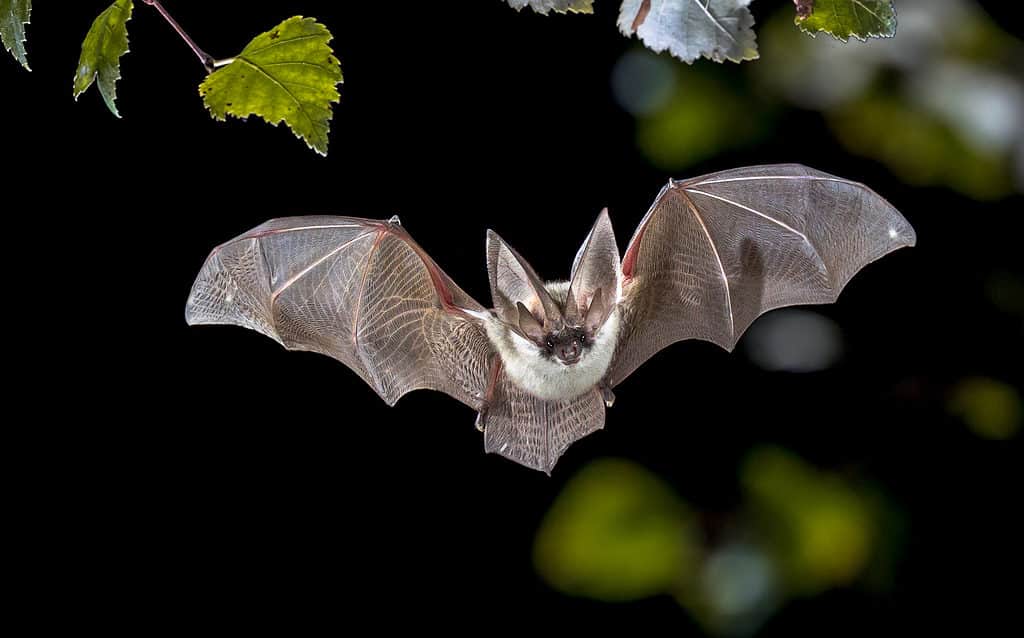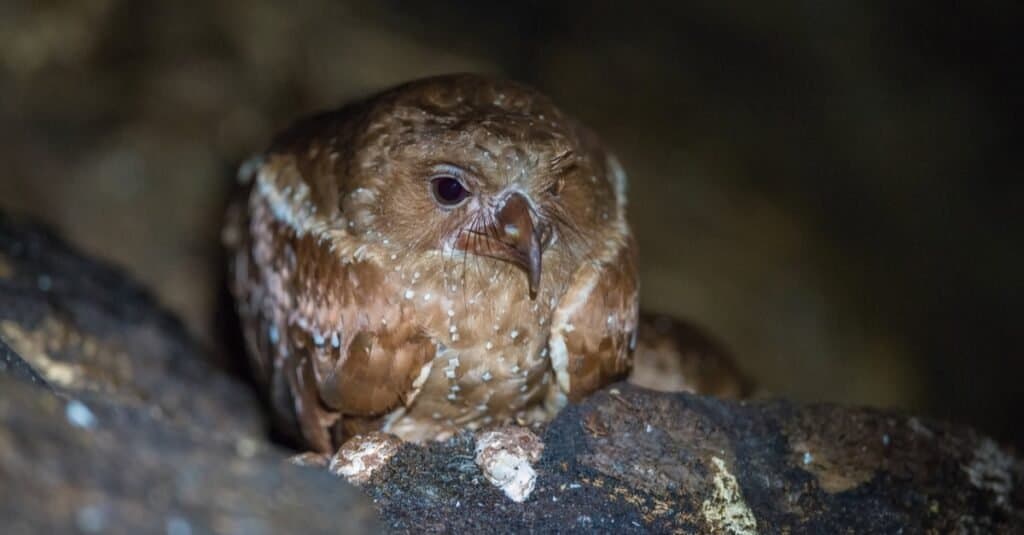Echolocation is a physiological process for locating objects by emitting and receiving sound waves.
Summary
Echolocation is a type of auditory imaging system. It allows an animal such as a bat to locate objects by relying on sound waves. The animal emits the sound waves before those sound waves reflect back to the animal. Then, the animal’s brain processes the sound waves, allowing them to get a better understanding of its environment.
Echolocation is also possible in humans to a certain extent.
Echolocation Explained

Bats are one of the most well-known users of echolocation.
©Rudmer Zwerver/Shutterstock.com
Echolocation is essentially the animal’s way of “seeing with sound”, as these animals rely on echolocation for various reasons that allow them to survive and function. There are certain animals that primarily rely on sound to navigate their environment, rather than their eyes or sense of smell. This is necessary when the animal is in an environment with poor visibility, navigating deep depths in the ocean, or has impaired vision. Think of it as nature’s very own biological sonar system.
The animal produces the sound waves, which reflect on various objects in the animal’s environment. Specifically, this could be the animal’s prey, other animals, or even obstacles. Further, each sound reflection allows the animal to determine what type of obstacle is in the environment, and it can range in size, appearance, and distance. Echolocation allows some animals to locate things in a dark environment, especially if the animal has their other senses impaired, such as their eyes.
In terms of animals that use echolocation, such as a bat, can range from 11 kHz to 212 kHz. Some of the frequencies are inaudible to humans since some frequencies produced by echolocating bats fall out of our hearing range. These are ultrasonic sounds, and animals emit them at frequencies too high for humans to hear. The bottlenose dolphin typically produces frequencies at 40 kHz to 150 kHz for echolocation; humans generally hear that.
The frequencies can range in audibility depending on the animals, and the human ear can hear some sounds from bats. The bat’s larynx (voice box) emits these high-frequency calls, which bounce or reflect off nearby objects, allowing these animals to process the surrounding environment by listening to the echoes.
How Different Animals Produce Echolocation Frequencies

Marine animals that use echolocation, like dolphins, use it to locate food sources.
©iStock.com/Michelle de Villiers
Most animals produce the frequencies necessary for echolocation by contracting their larynx organ. The larynx is an organ located at the top of the neck, and it is responsible for certain echolocating terrestrial animals like bats to produce high-frequency sounds. These sounds emit from the bat’s nostrils or mouth and vary in pitch. To hear the frequencies emitted, the bat has several different parts to their inner and external ear that allows them to receive and perceive the emitted sounds.
In aquatic animals like Odontoceti or toothed whales that echolocate by clicking, the sound is produced by the whales’ phonic lips. The whale produces a series of rapid clicks that are projected in front of the whale as it passes through the melon, a group of tissue located between the whale’s snout and blowhole. The air sacs of the whale allow the sound to be transmitted effectively into the water. The different structures of the whale’s inner ear allow them to hear the emitted clicks.
Uses of Echolocation

Oilbirds can navigate in the dark using echolocation.
©Petr Simon/Shutterstock.com
Echolocation has the following uses and functions in animals:
- Orientation
- Obstacle avoidance
- Food procurement
- Avoiding predators
- Locating prey
- Social interactions
- Communication with young or other group members
- Finding mates
Animals That Use Echolocation

Similar to bats, a shrew’s echolocation is perceived in the form of high-pitched squeaks.
©Rudmer Zwerver/Shutterstock.com
- Bats
- Whales
- Dolphins
- Oilbird
- Swiftlets from the Aerodramus genus and Collocalia troglodytes
- Pygmy dormice
- Shrews
- Tenrecs
- Aye-aye primate

















